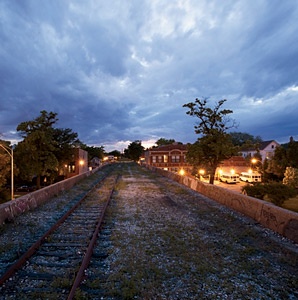
Call it the High Line Effect: T+L considers the now global allure of putting public parks on pedestals.
Not long ago, it seemed every city wanted its own version of the Guggenheim Museum Bilbao, a shining slab of “starchitecture” to generate prestige and attract visitors. Now everyone is clamoring for a version of the High Line, the elevated freight line in Manhattan that’s been converted into a stylish public promenade. Singapore is turning a rail line into a “green corridor,” with bike trails. In Jerusalem, the Train Track Park now connects neighborhoods rich and poor. Mexico City wants a High Line so badly it’s building a viaduct to support it. And here in the United States, virtually every urban planner is working on a variation—from Jersey City to Philadelphia and Chicago.
The trend is so widespread that it raises a question: does every last bit of urban grit and industrial-era detritus need to be glamorized, polished, and landscaped? Where would we be if we’d spent the past 2,000 years turning Roman aqueducts into elevated parks? Doesn’t it make sense, sometimes, to leave well enough alone, to allow things to picturesquely molder?
On the other hand, if you catch the High Line at the right time it feels magical, like a secret passageway in a children’s adventure story. Every city should have one (or two).
Perhaps what’s driving all this action is a new attitude toward cities. We don’t want to flee them anymore; we want to immerse ourselves in them. “Central Park was meant to be an escape,” says Robert Hammond, one of the activists who cajoled the High Line into existence, himself inspired by Paris’s Promenade Plantée. “On the High Line, you’re in nature, but you can hear the traffic, you can see the Empire State Building.” These new stretches of greenery frame an exploration of the man-made world much as woodland trails frame the forest. They give us fresh perspective on our surroundings, even in our own hometowns.